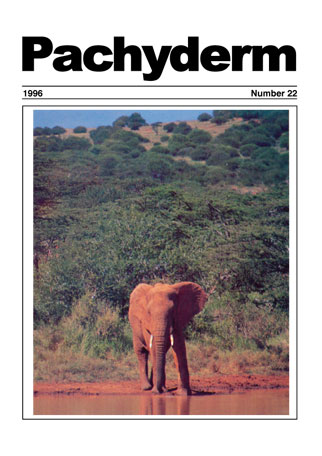Studying elephants by direct observation in the Dzanga clearing: an update
DOI:
https://doi.org/10.69649/pachyderm.v22i1.862Abstract
The Dzanga clearing in the southwestern forest of the Central African Republic continues to attract large number of forest elephants. Over the five years of observation 2100 individuals have been identified with 855 being seen at least twice. Observations have provided data of population structure, social organization, birthrate, and behaviour. The number of elephant identified per day, expressed as a percentage of the maximum 30 minute count, continues to increase with the figures for October 1995 through December 1995 calculated to be 82%. New identifications now average one individual per week. Observations of the 45 males in musth suggest that is synchronized, occurring approximately the same time each year for each male seen in musth. From the data thus far musth can be described as a dry season phenomenon.
Downloads
Published
How to Cite
Issue
Section
License
Copyright (c) 1996 Andrea K. Turkalo

This work is licensed under a Creative Commons Attribution-NonCommercial 4.0 International License.




